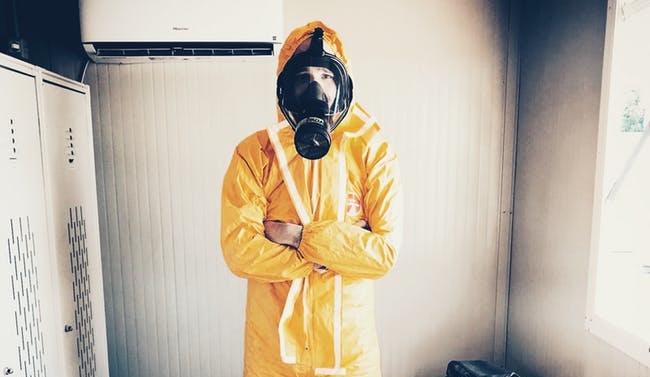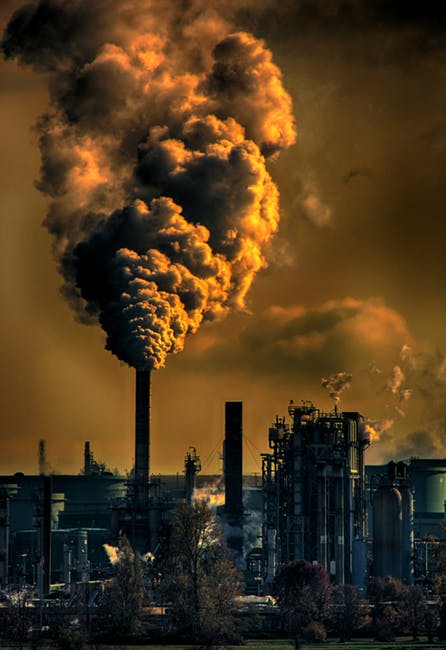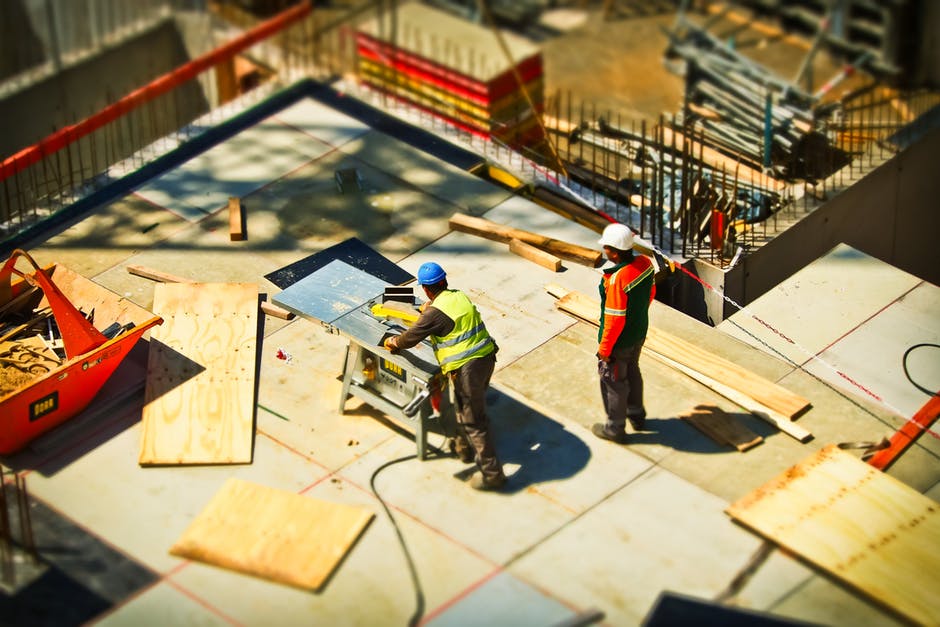Today human shelters have transformed, it’s no more under the trees or in caves – currently skyscrapers, hi-tech complexes, and sub-terrain bunkers are the real meaning of shelter homes for us. Well, all the possible credit goes to the very discovery of reinforced cement concrete. But again, as construction industry evolves and upgrades, new challenges come along – challenges to make these structures stronger, sleeker, damp proof, and decay proof, also construct at locations which rebel imagination, and yes not to forget the economic aspect.
Construction materials like, bricks, blocks, etc. are being used widely right from the founding level i.e. below the ground to the topmost floors. Now admixtures, adhesives, sealants, coatings, etc., have become an essential part of everything that goes into constructing all sorts of construction projects and in almost every stage of construction. These are often used in several elements of the projects to achieve various important qualities like workability, durability etc. But, many of these materials contain construction chemicals that are deemed to be of unreasonable risk to human health or the environment. Let’s know them:
chemicals in construction
The ‘Red List’ Of 20 Toxic Construction Chemicals
Chemicals
list of construction chemicals
1. Asbestos
All building structures constructed between the early 1920s and the late 1980s are alleged to harbor asbestos and products which contain asbestos in walls, ceilings, insulation, floors, pipes, HVAC, boiler rooms and many more. But this construction chemical becomes a hazard when it is damaged, crumbled, or needs repair. It poses a health risk to the maintenance workers, repairman, and building occupants. Exposure to even a small quantity of asbestos during construction, repairs, demolition, modification or maintenance — can cause serious health issues like asbestosis, mesothelioma, lung cancer, etc. In fact, asbestos is often linked to one of the most pernicious forms of cancer.
construction chemicals
2. Silica
This is a natural substance that is commonly found in varying amounts in most rocks, clay, and sand. For instance, granite can contain 15-30%, whereas sandstone contains more than 70% silica. This chemical is also one of the major constituents of construction materials like tiles, concrete and mortar, and bricks. After asbestos, Silica is the biggest risk to construction workers. High and prolonged exposure to RCS can lead to lung cancer and other grave respiratory diseases.
construction chemicals
3. Formaldehyde
This is a colorless gas that is emitted mainly from building materials and household products. Formaldehyde is used in a wide spectrum of products, in construction it is widely used as a binder in insulation products, in the adhesives used in the wood panel products and carpet products. When found at high levels in air, it can cause asthma-like respiratory problems and skin irritation like as dermatitis and itching.
construction chemicals
4. Diisocyanates
Diisocyanates are a family of chemical building blocks mostly used to make polyurethane products, like rigid and flexible foams, coatings, adhesives, sealants and elastomers. This chemical is particularly very important in the production of countless products in the construction and transportation industry. The health effects of exposure to diisocyanates include occupational asthma; irritation to the mucous membranes, eyes, nose and throat; skin irritation (dermatitis); gastrointestinal irritation; chemical bronchitis; and pneumonitis.
construction chemicals
5. Alkylphenol
This chemical is a component in phenolic resins that has been used in the industry for nearly 50 years. In construction these are mainly found in high-performance rubber products, adhesives, paints and coatings.
chemicals used in construction
6. Chlorinated Polyethylene (CPE)
CPE is a versatile material that exhibits excellent physical and mechanical properties, including resistance to chemicals, oils, heat, and weathering; compression-set resistance; low-temperature performance; flame retardancy; high filler acceptance; tensile strength; and resistance to abrasion. In construction, it is widely used as a thermoplastic elastomer (TPE), rubber and modifier for resins (PVC, PE and ABS). Identified emissions resultant from combustion include carbon dioxide, carbon monoxide, and hydrogen chloride.
chemicals used in construction
7. Cadmium
Very commonly used as a sacrificial corrosion-protection coating for iron and steel, and in the production of nickel-cadmium (Ni-Cd) rechargeable batteries. Other prominent uses of this chemical include alloys, coatings (electroplating), solar cells, plastic stabilizers, and pigments. Cadmium and its compounds are extremely toxic and exposure to this metal are linked to the cause of cancer, it also targets the body’s cardiovascular, renal, gastrointestinal, neurological, reproductive, and respiratory systems.
Building Construction Chemicals
8. Bisphenol A
Bisphenol A, commonly referred to as BPA, is a chemical that mainly serves as a basic building block to produce polymer plastics and coatings, largely polycarbonate and epoxy resins. BPA has been exposed to play a role in the pathogenesis of several endocrine disorders, it includes female and male infertility, hormone-dependent tumors like as breast and prostate cancer, precocious puberty, and several metabolic disorders including polycystic ovary syndrome (PCOS).
BB
9. Halogenated Flame Retardants
Flame retardants, a term used for a collection of chemicals which are used to inhibit the ignition or spread of fire. Halogenated flame retardants are found in thermal insulation boards, many textiles, and surface finishes and coatings. This chemical is linked to cancer, birth defects, endocrine disruption, and developmental problems in children.
Green building
10. Chlorobenzene
An aromatic compound that is a colorless, flammable liquid and a common solvent used widely in the manufacture of other chemicals. In construction these are used as a solvent in the manufacture of adhesives, polishes, paints, paint removers, dyes, and drugs.
Construction
11. Lead
This chemical comes with a long history of exhaustive usage, but now we have started understanding its real potential to harm humans. But there is no running away from the fact that it plays a huge role in the construction industry, chiefly in roofing applications, cornices, tank linings, and electrical conduits. For thousands of years, lead has been poisoning workers. It has the potential to damage the central nervous system, cardiovascular system, hematological system, kidneys and reproductive system.
Chemicals
12. Chlorofluorocarbons (CFCs)
Now it’s quite generally accepted that CFCs are actively contributing to the depletion of the ozone layer and to greenhouse warming of the earth. These are a group of odorless manufactured chemicals that are used in aerosols, refrigerators, air conditioners, foam food packaging, and fire extinguishers. Long-term exposure to Chlorofluorocarbons can cause cataracts, weakened immune system and skin cancer.
Chemicals
13. Chloroprene (CR)
An organic compound that is mainly used in the rubber industry but is also imperative as a raw material for adhesives and has diverse latex applications like moulded foam, rubber sheeting, sound insulation and gaskets.
Hazardous Chemicals
14. Hexavalent chromium / Chromium-6
Its corrosion resistance makes it a common choice as a plating or alloy in the production of stainless steel. This construction chemical is used to produce CCA (chromated copper arsenate) which is applied as a preservative in the treatment of structural timber.
Green Building
15. Mercury
The toxicity of mercury has long been known to humans. It has been used in a wide variety of equipment and consumer products, like thermometers and certain types of light bulbs. As a bioaccumulative, persistent, toxic substance, mercury threatens the health of humans and wildlife.
Green Building
16. Chlorosulfonated polyethylene (CSPE)
Chlorosulfonated polyethylene or CSM is a synthetic rubber based on polyethylene. The UV stability, weatherability, and adhesion competence has made this chemical very popular for roofing membranes, liners and covers for portable water reservoirs etc. Wire and cable sheathing and paint are few other applications of CSPE.
Construction industry
17. Polyvinyl chloride (PVC)
A common, strong but lightweight plastic used in a variety of applications in the building and construction industry. It is used in drinking water and wastewater pipes, window frames, flooring and roofing foils, wall coverings, cables and many other applications as it provides a modern alternative to traditional materials such as wood, metal, rubber and glass. Irrespective of being a popular building material, PVC has commonly been blamed for emitting chemical softeners called phthalates (in vinyl flooring), lead additives (in blinds), and toxic glues that are extremely hazardous.
health issues chemicals
18. Polychlorinated Biphenyls (PCBs)
These are synthetic organic chemicals which were typically produced for use in various industrial and commercial applications like oil in electrical and hydraulic equipment, plasticisers in paints, and plastics and rubber products. In recent years, its usage has become severely restricted.
health issues chemicals
19. Perfluorinated Compounds (PFCs)
PFCs are stain, water and grease repellent chemicals found in a wide range of consumer products. These are used to make stain, heat and water-resistant products including fire protection agents, floor polishes and paints. In addition, these are also used to manufacture non-stick coatings. High exposures to PFCs has been associated with pre-eclampsia (pregnancy-induced hypertension), birth defects (PFOA only), and increased uric acid levels – a marker of heart disease.
hazardous chemicals in construction industry
20. Short-Chain Chlorinated Paraffins (SCCPs) (or Chlorinated alkanes)
SCCPs are largely used in extreme pressure lubricants in the metal processing industry. These are also used in the glues and coating materials, fillers or sealers, used in the building industry, and in rubber and leather treatments.
Chemicals
Final Thoughts
Chemicals
This list isn’t an all-inclusive one, there are many more such chemicals harming the environment and human health. With better awareness of the health issues in relation to these construction chemicals in building materials, end users and designers can make more calculated and informed decisions. We definitely cannot change the building industry, but at least look for alternatives that are already existing in the market which illustrate the potential for greater sustainability and healthier products.
Wienerberger Porotherm Bricks are such one example, this walling solutions is environment-friendly, cost-effective, easy to use and feasible to address new age construction methodologies.
You May Like – Why “Hollow Bricks” Give You Better Value For Money Than “Solid Bricks / Blocks”?
http://theglutengal.com/2011/12/ Authored By A Wienerberger Building Expert.









